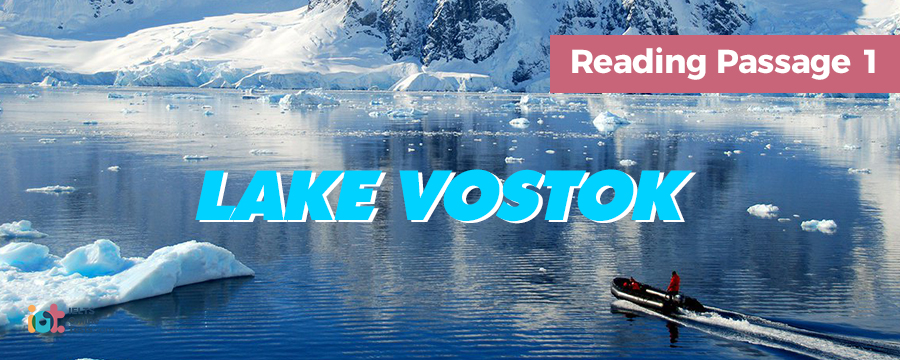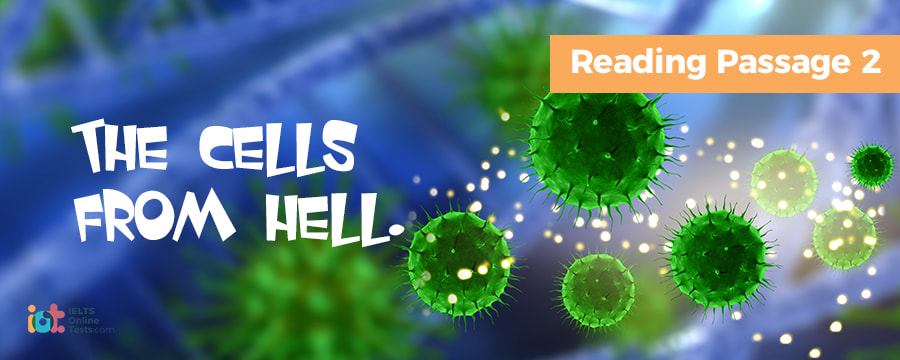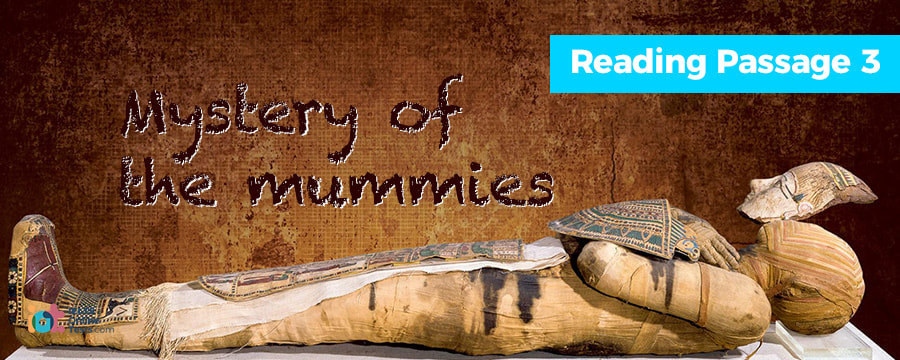Part 1
Reading Passage 1
You should spend about 20 minutes on Questions 1-13 which are based on this passage.

Lake Vostok
A
Beneath the white blanket of Antarctica lies half a continent of virtually uncharted territory - an area so completely hidden that scientists have little clue what riches await discovery. Recently, Russian and British glaciologists identified an immense lake - one of Earth’s largest and deepest - buried beneath 4,000 meters of ice immediately below Russia’s Vostok Station.
B
As details have emerged, a growing number of scientists are showing interest, with dozens of investigators keen to explore the feature, known as Lake Vostok. A thick layer of sediment at the bottom of the lake could hold novel dues to the planet’s climate going back lens of millions of years. By looking at the ratio of different oxygen isotopes, scientists should be able to trace how Earth’s temperature changed over the millennia. NASA has expressed interest in Lake Vostok because of its similarity to Europa. This moon of Jupiter appears to have a water ocean covered by a thick ice sheet, measuring perhaps tens of kilometers in depth. If hydrothermal vents exist beneath the ice, chemical reactions on Europa could have created the molecular building blocks for life, if not life itself. Vostok would be an ideal testing ground for technology that would eventually fly to Europa or places even more distant, say many scientists. Though cheap compared with a Europan mission, any expedition to Vostok would represent a significant investment.
C
Vostok Station holds the uncomfortable distinction of having recorded the coldest temperature on Earth. Thermometers there measured in July 1983, and the average temperature hovers around -55ºC. It’s the thick ice, strangely, that enables a lake to survive in such a frozen environment. The 4 kilometers of ice acts effectively as an insulating blanket protecting the bedrock underneath the ice from the cold temperatures above. Geothermal heat coming from the planet’s interior keeps the lake from freezing and warms the lowest layers of ice. The tremendous weight of the ice sheet also plays a role in maintaining the lake. Beneath 4 kilometers of glacier, the pressure is intense enough to melt ice at a temperature of -4°C. These factors have helped lakes develop across much of the thickly blanketed East Antarctica. More ore than 70 hidden lakes have been detected in the small portion of the continent to date. Lake Vostok is the largest of these, stretching 280km from south to north and some 60 km from east to west. At Vostok station, which sits at the southern end of the lake, the water depth appears to be 500m according to seismic experiments carried out by Russian researchers.
D
The first clues to Lake Vostok’s existence came in the 1970s, when British, U.S., and Danish researchers collected radar observations by flying over this region. The radar penetrates the ice and bounces off whatever sits below. When researchers found a surface as flat as a mirror, they surmised that a lake must exist underneath the ice. An airborne survey of the lake is being undertaken, the first step toward eventually drilling into the water. Along with the potential rewards come a host of challenges. Researchers must find a way to penetrate the icy covering without introducing any microorganisms or pollutants into the sealed-off water.
E
What about life in the depths? If tiny microbes do populate the lake, they may be some of the hungriest organisms ever discovered. Lake Vostok has the potential to be one of the most energy-limited, or oligotrophic, environments on the planet. For the lake’s residents, the only nutrients would come from below. Russian investigators have speculated that the lake floor may have hot springs spewing out hydrothermal fluids stocked with reduced metals and other sorts of chemical nutrients. Scant geological evidence available for this region, however, indicates that the crust is old and dead. Without a stream of nutrients seeping up from the deep Earth, the only potential source of energy lies above the lake. The ice sheet above the water is creeping from west to east at a rate of roughly four meters per year. The lowermost layers of ice melt when they come in contact with the lake, liberating trapped gases and bits of crushed-up rock. If the glacier recently passed over rock before reaching the lake, it could be supplying organic compounds useful to microorganisms. It also could be seeding the lake with a continuous source of new residents. Bacteria, yeasts, fungi, algae and even pollen grains have been found in the Vostok ice core samples taken down to depths of 2,750m - three quarters of the way to the bottom. At least some of these organisms are alive and capable of growing, according to recent reports. The results of this analysis may indirectly indicate whether anything survives in the lightless body of water.
Part 2
Reading Passage 2
You should spend about 20 minutes on Questions 14-26 which are based on this passage.

The cells from hell
Recently, an international team of biologists met to discuss what they believe is a global crisis in the sudden appearance of strange marine microorganisms capable of poisoning not just fish but people too.
In the mid-1980s, fishermen in North Carolina, on the eastern coast of the United States, began complaining about mysterious fish kills. They were convinced that pollution was responsible but nobody would listen. That changed in 1988 after an accident at. a research center. Tank after tank of fish suddenly died. Researchers spotted an unknown microorganism in the water. It was later named pfiesteria.
Pfiesteria belongs to a prehistoric group of algae that are part plant, part animal. They are called dinoflagellates after the liny whips or flagella that propel them through the wafer. Magnified a thousand limes they are some of the strangest and most beautiful creatures in the sea. They are at the bottom of the food chain but, to deter fish from swallowing them, some have evolved powerful toxins.
As the researchers were to discover, pfiesteria doesn’t just discourage fish. It actively hunts them, then eats them. Fish are one of its preferred foods but one of the intriguing things about pfiesteria is that it will eat everything from bacteria to dead plant and animal remains all the way up to mammalian tissues. So its food spans the entire food web of an estuary. Gradually the researchers realised that nothing in the water was safe from pfiesteria. It could harm humans too. A mis-directed air-conditioning duct from a room containing the toxins nearly killed one of the researchers. He suffered a host of symptoms ranging from profuse sweating, tingling hands and feet, to liver and kidney problems, as well as memory
As the research intensified, some startling discoveries were made. In tanks, pfiesteria was quite content to behave like a plant and photosynthesize. However, when fish were added, a dramatic transformation occurred, pfiesteria switched to attack mode. In a matter of minutes it changed shape and secreted a toxin. The fish quickly became disorientated and within five minutes all were dead. Pfiesteria changed shape again and devoured them. When it had had its fill, it vanished. No one had ever seen an organism do this.
Initially scientists believed this was part of a natural cycle, but on closer examination, it seemed pollution was to blame. When the water containing the biggest fish kills was analysed, scientists found high levels of pollution. But this is just one of the factors that can boost the transformation in pfiesteria. Others include large numbers of fish travelling together which feed in poorly flushed places with a lot of algae to eat and other rich food sources. That is the perfect habitat for pfiesteria.
But pfiesteria is not the only concern. In the oceans all around the world similar kinds of algae are now materialising and turning toxic. In the last decade these algal blooms¹ have poisoned sea-lions in California, caused catastrophic fish kills in the Pacific, the Mediterranean and the North Sea, and devastated the shellfish industry in New Zealand. Researchers from forty-seven nations met recently to share the latest information about harmful algal blooms. They heard about new kinds of toxins and discussed possible links between algae and whale standings. But what dominated the proceedings was news that toxic algae are spreading to new shores in ballast water carried by ships.
That may have already happened in Australian waters. A tuna kill in 1996 cost fish farmers an estimated $45 million. The official explanation was that a storm was to blame. But there were also reports of orange-brown streaks in the water. When a water sample was examined, it was found to be teeming with an alga never before seen in Australia, called chattonella. The same chattonella killed half a billion dollars’ worth of fish in Japan in 1972.
This toxin was also present in the livers of the dead tuna. Despite this powerful evidence, the official explanation remains that a storm was the killer. However, in Japan this was a prime example of an algal bloom induced by the waste products of the aquaculture industry itself, and of course that is not something that the tuna industry wants to hear.
It is clear that chattonella is present in Australian waters. But there is little knowledge of what else may surface or where it may have come from. What is of greater concern is that, in Australia and around the world, there is a reluctance to acknowledge that it is human activity which is triggering the transformation of normally benign organisms into increasingly dangerous forms. If we continue to mismanage the way nutrients and pollutants are released into the environment, we will have to confront new versions of the cells from hell.
Glossary
¹ algal bloom: The rapid growth under specific conditions, of minute aquatic plants
Part 3
Reading Passage 3
You should spend about 20 minutes on Questions 27-40 which are based on this passage.

Mystery of the mummies
In 1992, a German scientist made a discovery which was to upset whole areas of scientific study from history and archaeology to chemistry and botany. Dr. Svetlana Balabanova, a forensic specialist, was performing tissue tests on an Egyptian mummy, part of a German museum collection. The mummified remains were of a woman named Henut-Taui who had died over 3,000 years ago. Amazingly, the tests revealed that her body contained large quantities of cocaine and nicotine. Dr. Balabanova had regularly used the same testing methods to convict people of drug consumption but she had not expected to find nicotine and cocaine in an Ancient Egyptian mummy. It is generally accepted that these two plants, native to the Americas, did not exist on other continents prior to European exploration.
Dr. Balabanova repeated the tests then sent out fresh samples to three other labs. When the results came back positive, she published a paper with two other scientists. If Balabanova was shocked by the results of her tests, she was even more shocked at the hostile response to her publication. She received many insulting letters, accusing her of fraud.
There were two explanations that came immediately to mind. One was that something in the tests could have given a false result. The second was that the mummies tested were not truly Ancient Egyptian. Perhaps they were relatively modern bodies, containing traces of cocaine. Dr. Balabanova then examined tissue from 134 naturally preserved bodies over a thousand years old discovered in an excavated cemetery in the Sudan. About a third of them tested positive for nicotine or cocaine.
But something had happened even earlier which should have initiated serious discussion. In 1976, the mummified remains of Ramses II arrived in Paris for repair work. Dr. Michelle Lescot of the Natural History Museum (Paris) was looking at sections of bandages and within the fibres found a plant fragment. When she checked it under a microscope, she was amazed to discover that the plant was tobacco. Fearing that she had made some mistake, she repeated her tests again and again with the same result every time: a New World plant had been found on an Old World mummy. The results caused a sensation in Europe. Was it possible that a piece of tobacco had been dropped by chance from the pipe of some forgotten archaeologist? Dr. Lescot responded to this charge of contamination by carefully extracting new samples from the abdomen, with the entire process recorded on film. These samples, which could not be ‘droppings’, were then tested. Once again they were shown to be tobacco. The discovery of tobacco fragments in the mummified body of Ramses II should have had a profound influence upon our whole understanding of the relationship between Ancient Egypt and America but this piece of evidence was simply ignored. It raised too many questions and was too far outside of commonly accepted scientific views.
So now the question had returned. Could Ancient Egyptian trade have stretched all the way across the Atlantic Ocean? This was an idea so unbelievable it could only be considered after all other possibilities had been eliminated. Could Egyptians have obtained imports from a place thousands of miles away, from a continent supposedly not discovered until thousands of years later? Was it possible that coca - a plant from South America - had found its way to Egypt 3,000 years ago? If the cocaine found in mummies could not be explained by contamination, or fake mummies or by Egyptian plants containing it, there appeared to be another interesting possibility: a trade route with links all the way to the Americas.
The Egyptians did make great efforts to obtain incense and other valuable plants used in religious ceremonies and herbal medicines, but to the majority of archaeologists, the idea is hardly worth talking about. Professor John Baines, an Egyptologist from Oxford University, states: ‘I don’t think it is at all likely that there was an ancient trade network that included America. The essential problem with any such idea is that there are no artefacts found either in Europe or in America.’ But other experts aren’t so sure. Professor Martin Bernal, an historian from Cornell University, says, ‘We’re getting more and more evidence of world trade at an earlier stage. You have the Chinese silk definitely arriving in Egypt by 1000 BC.’ In his opinion, it is arrogance on the part of modern people to believe that a transoceanic trading network could only have been set up in recent times.
The discoveries in mummies from Egypt and Sudan have challenged conventional beliefs. It is no longer possible to exclude the hypothesis of transoceanic trade in ancient times. The tale of Henut-Taui and the story of Ramses II show that, in science, facts can be rejected if they don’t fit with our beliefs, while what is believed to be proven, may actually be uncertain. It is understandable then, how a story of a scientist, a few mummies and some routine tests, could upset whole areas of knowledge we thought we could take for granted.


